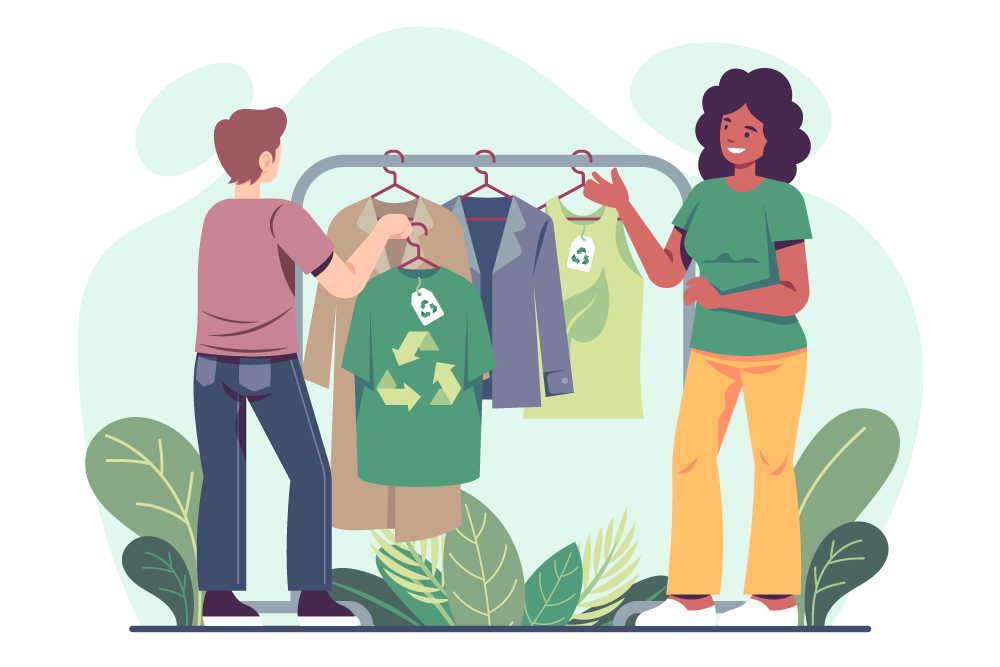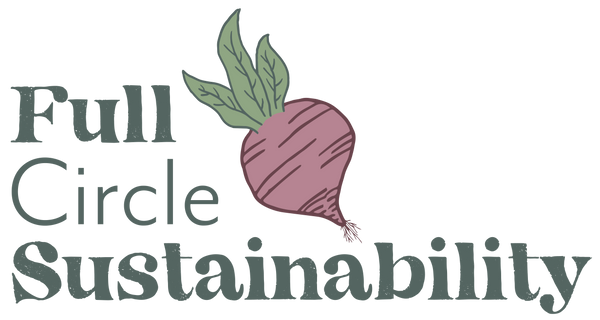
Tips for Eco-Conscious Clothing Consumption
Today's blog post comes from guest writer Farai Herrald, a local writer and folk herbalist in Topeka.
Human beings, regardless of gender, sex, culture, or location have always used clothing and style to communicate specific things about themselves, their culture, religion, values, occupation and much more.
In college, I was introduced to fast fashion in the form of cheap clothes that needed to be replaced almost every season because of their quality. Back to school season found me frequenting the mall, perusing the racks for all the events my college career demanded of me. After watching the film True Cost during my forays into minimalism over a decade ago, I truly began to question the impact of my shopping habits and began to address them as mindfully as I could at the time with my broke college kid budget.
The reality is this: the global fashion industry is destroying the Earth at alarming rates, especially as we consume and discard clothing at seasonal and "micro-seasonal" rates. Most modern clothing is made so quickly, poorly, and with such low quality synthetic fabric that it is only meant to last that season—so once it falls apart, you will find yourself back at the mall or online, shopping to pad your wardrobe for the next season.
I would argue that there is no ethical consumption under capitalism, but we can choose to find a way to consume and dress ourselves in a way that aligns with our personal values. So how does one engage with clothing and fashion in a more ethical, sustainable, and Earth-friendly manner?
1. Take care of the clothes you have. Have them mended or altered to fit you better. Shoes and bags can be repaired too, depending on the fabrics they are made of.
2. Really question whether or not you need something, or if you need the dopamine hit of a fun purchase.
3. Try to find it secondhand if you do. Poshmark, Mercari, and eBay are great places to start.
4. If you must shop, invest in fabrics that are Earth friendly. Think hemp, cotton, silk, and wool. I always think about how my clothing cannot have a lifespan longer than mine. Of course the exception is performance fabrics, but those are easily found secondhand too.
5. Don’t be afraid to repeat outfits. Our society has this stigma around outfit repeating, but there is a beautiful simplicity in putting on something tried, true, and tested. I wear the same dress to weddings, events, and galas as needed. Or I borrow from friends.
6. Have a list! It is important to go through your closet and evaluate your needs and prepare accordingly so that you are not scrambling/at the mercy of fast fashion when the time comes for a needed item. For example, winter items like mittens, and gloves are easily lost. Having a running list helps so that when you do go to shop for said items, you know exactly what you are looking for and will not be distracted. Having a list when you go to do any kind of clothes hunting—whether it's the upcoming swap, thrift, or even regular store—will keep you focused so you only take or buy what you need.
7. My last and favorite tip is engaging in swap economy and hand-me down culture. I have benefited vastly from hand-me-downs from other moms in my community, and just last week I bagged up some baby books and clothing for another mom with a newborn from my own closet. Last year I borrowed a green velvet jumpsuit to go to a party that I had admired from a friend and returned it after laundering it appropriately.
What are some ways you can be more mindful when it comes to clothing consumption?
Happy dressing!
-Farai

Farai in her borrowed green jumpsuit



